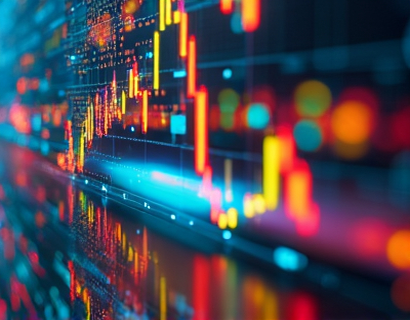Unlocking Artistic Success: A Guide to Discovering and Selling Unique Artworks Online
The digital age has revolutionized the way artists showcase and sell their creations, breaking down geographical barriers and connecting a global audience of art enthusiasts and collectors. This transformation has given rise to innovative online platforms designed specifically for the art community, offering a robust and user-friendly environment for both creators and buyers. These platforms not only provide a space to exhibit unique physical and digital artworks but also foster a vibrant community that supports and inspires artistic growth.
In this article, we will delve into the world of online art marketplaces, exploring how they are reshaping the art industry. We will discuss the benefits of using these platforms for artists looking to expand their reach and for collectors seeking original and exclusive pieces. By understanding the mechanics and advantages of these digital spaces, artists and art lovers can better navigate this exciting landscape and unlock new opportunities for artistic success.
The Evolution of Art Sales in the Digital Age
The traditional art market, once confined to physical galleries and auction houses, has evolved significantly with the advent of the internet. Online platforms have democratized the art world, providing a level playing field for artists of all backgrounds to showcase their work. These platforms leverage technology to create immersive and interactive experiences, allowing collectors to explore and purchase art from the comfort of their homes.
The shift to digital has also made the art market more accessible and inclusive. Artists from diverse regions and cultures can now reach a global audience, bypassing the limitations of physical location. This global exposure not only broadens their audience but also increases the potential for sales and recognition. For collectors, the online marketplace offers a vast array of artworks to discover, often with detailed information and high-quality images that enhance the buying experience.
Benefits for Artists
For artists, online platforms offer a multitude of benefits that traditional methods cannot match. One of the most significant advantages is the ability to reach a wider audience. No longer confined to local galleries or art fairs, artists can showcase their work to millions of potential buyers worldwide. This increased visibility can lead to more sales and greater recognition within the art community.
Another key benefit is the reduced overhead costs associated with physical exhibitions. Artists no longer need to invest in rental fees, transportation, and other expenses related to traditional gallery shows. Online platforms typically offer commission-based sales, which means artists retain a larger portion of the revenue from each sale. This financial model can be particularly beneficial for emerging artists who are still building their portfolios and client base.
Moreover, these platforms provide artists with valuable feedback and insights. Through analytics and engagement metrics, artists can understand which pieces resonate most with their audience and adjust their creative strategies accordingly. This data-driven approach can help artists refine their style, experiment with new techniques, and ultimately grow as artists.
Benefits for Collectors
Collectors, too, stand to gain significantly from the rise of online art marketplaces. One of the primary advantages is the convenience and accessibility. Collectors can browse and purchase artworks from the comfort of their homes, at any time of day. This flexibility is especially beneficial for those with busy schedules or those living in areas with limited access to physical art galleries.
The detailed information provided about each artwork, including artist bios, creation processes, and price histories, enhances the collecting experience. Collectors can make more informed decisions, gaining a deeper appreciation for the art they purchase. High-quality images and virtual viewing options allow collectors to examine the pieces closely, ensuring they are making a well-considered investment.
Additionally, online platforms often host virtual exhibitions and events, providing collectors with opportunities to engage with artists and other collectors in real-time. These interactions can lead to meaningful connections and a richer understanding of the art world. Collectors can also follow their favorite artists and receive notifications about new pieces, keeping them updated on the latest additions to the artist's portfolio.
Discovering Unique Artworks
One of the most exciting aspects of online art marketplaces is the diversity and uniqueness of the artworks available. Artists are free to experiment with various mediums and styles, creating pieces that push the boundaries of traditional art. From abstract paintings to digital art, sculptures, and mixed media installations, the variety is staggering.
For collectors looking for something truly unique, these platforms offer a treasure trove of one-of-a-kind pieces. Unlike mass-produced art, each artwork on these platforms is original, making it a true investment and a statement piece for any collection. The ability to discover emerging artists and support their careers adds an element of personal satisfaction to the collecting process.
Moreover, many platforms curate collections based on specific themes or styles, making it easier for collectors to find artworks that align with their tastes. Whether it's contemporary art, vintage pieces, or art from a particular region, there is something for every collector's preference.
Selling Art Online: A Step-by-Step Guide
For artists looking to sell their work online, the process is straightforward and user-friendly. Here’s a step-by-step guide to help you get started:
- Choose a Reputable Platform: Research and select an online marketplace that aligns with your artistic goals and target audience. Consider factors such as commission rates, user base, and features offered.
- Create an Artist Profile: Most platforms require artists to create a profile, including a bio, contact information, and a portfolio of your work. This profile serves as your digital storefront, so make it compelling and professional.
- Upload Your Artworks: Upload high-quality images of your artworks, along with detailed descriptions, including the title, medium, size, and price. Providing context about your creative process can also add value and intrigue for potential buyers.
- Set Competitive Prices: Research the market to set prices that are competitive yet reflect the value of your work. Consider factors such as the size, complexity, and demand for similar pieces.
- Promote Your Art: Utilize the platform’s promotional tools, such as social media sharing options, email newsletters, and community features, to increase visibility. Engaging with the platform’s community can also help attract potential buyers.
- Respond to Inquiries: Be responsive to inquiries from collectors and provide them with additional information or images as needed. Building a rapport can lead to more sales and long-term relationships.
By following these steps, artists can effectively leverage online platforms to showcase and sell their work, reaching a global audience and growing their artistic career.
Fostering a Vibrant Community
One of the most significant advantages of online art marketplaces is the sense of community they foster. These platforms bring together artists and collectors from around the world, creating a space for collaboration, learning, and support.
Artists can connect with peers, share insights, and learn from each other’s experiences. Many platforms host forums, webinars, and workshops, providing opportunities for professional development and networking. This community support can be invaluable, especially for emerging artists navigating the challenges of the art world.
Collectors, too, benefit from the community aspect. They can connect with like-minded individuals, share their passion for art, and gain insights from experienced collectors and artists. These interactions can lead to new friendships and a deeper appreciation of the art they collect.
Moreover, many platforms organize virtual and physical events, such as online exhibitions, artist talks, and meet-and-greets. These events not only promote artworks but also strengthen the bonds within the community, creating a supportive and dynamic environment for all participants.
Conclusion
The integration of online platforms into the art world has opened up new possibilities for both artists and collectors. These platforms offer a seamless, accessible, and vibrant space for discovering and selling unique artworks, fostering a global community of creativity and passion. By embracing these digital tools, artists can expand their reach and collectors can find exceptional pieces that resonate with their interests.
As the art industry continues to evolve, online marketplaces will play an increasingly important role in shaping the future of art. Whether you are an artist looking to share your work with the world or a collector seeking to add a unique piece to your collection, these platforms provide the tools and opportunities to make your artistic journey successful and fulfilling.











































